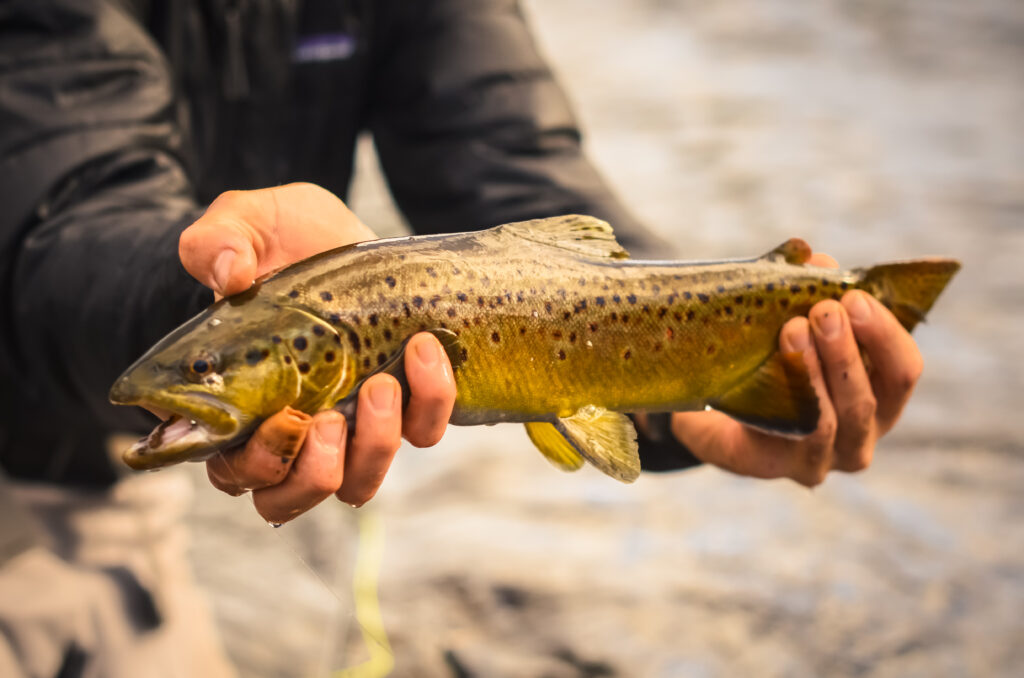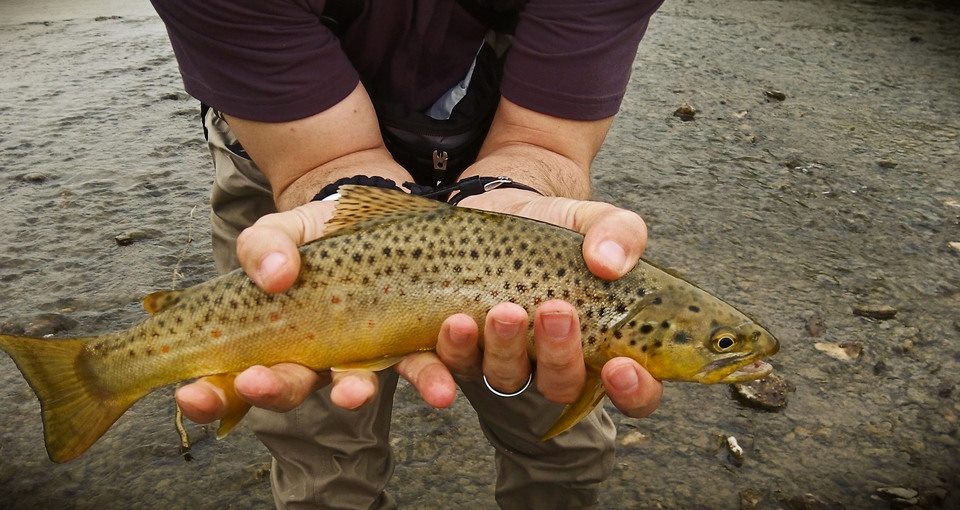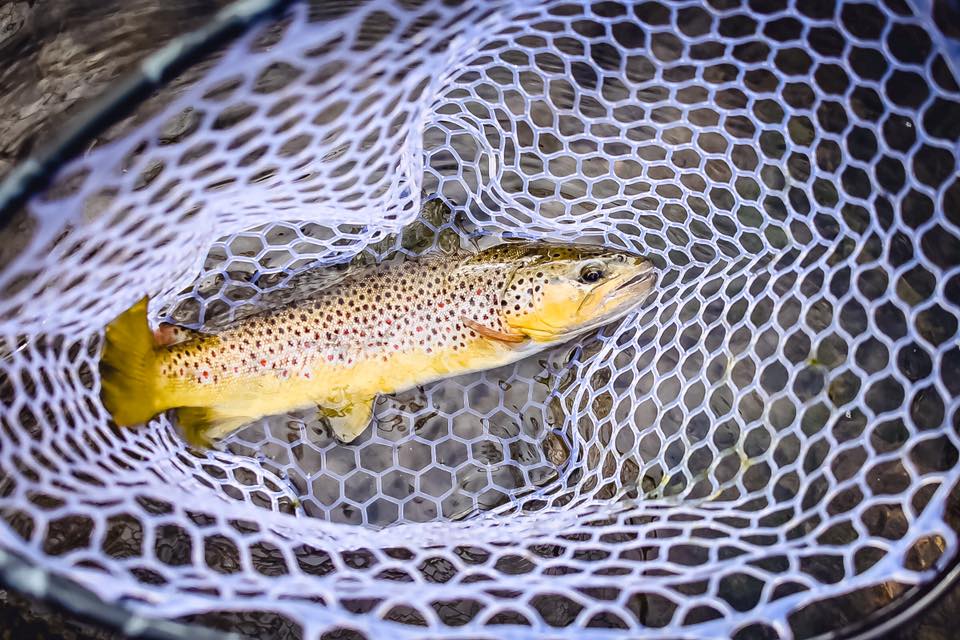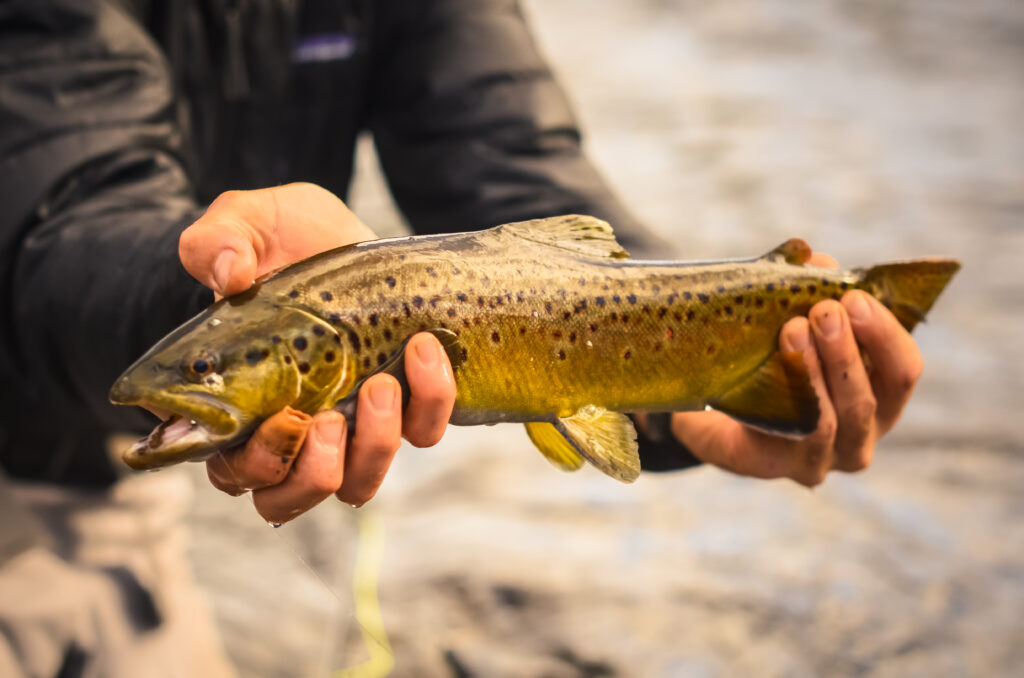
While the calendar tells us that fall arrives with autumnal equinox on September 22nd (in the northern hemisphere), the onset of fall may arrive sooner or later depending on where you live. As the days get shorter and air temperatures cool, concurrent changes in water temperature will signal a move from deeper water to shallower pre-spawn feeding areas.
Again, depending on where you live, you can expect brown and brook trout to enter pre-spawn in August or September. In the west it can vary greatly with elevation—and in the South with overall weather trends.
Watch for that first night of freezing temperatures as trout typically begin feeding frequently an aggressively within a couple days of sustained cold weather. Expect the aggressive pre-spawn bite to last until water temperatures fall to the mid- to upper-40s and the fish turn their attention to the actual spawn. At this time trout will strike solely out of aggression, and many fishermen choose to target downstream fish or resting post-spawn fish rather than cast the redds.
In most water bodies, browns will move toward headwater areas to spawn in gravel-bottom areas with cool oxygen-rich water between 44- to 48 degrees any time between September and December. Brook trout spawn slightly ahead of browns on the calendar and will look for similar areas of good flow including upwelling springs in temperature ranges between 40 and 49 degrees.
Now, whether trout really put on the feed bags in preparation for the spawn, winter, or simply because the water temperature is optimal for their metabolism is a matter of debate. No matter the reason, cold temperatures awaken trout from summer’s slumber. The results can be epic.
Best Time of Day To Fish

During summer, trout fishing is typically best during the low-light of early morning and evening. In early fall, concentrate on the same times, but here’s good news for the sleep-in-late crowd: As fall progresses and days get shorter, the bite shifts to mid-day when the water warms as little as a half- to full-degree.
Not only do you get to sleep in, but fishing mid-day until dark in the fall requires little stamina—it’s no more than a few hours. But don’t call it quits too early—the fish can get pretty grabby right before dark, continuing to feed at night. As many trout experts will tell you, nighttime can be your best shot at a monster brown trout, so don’t overlook it. And here’s a tip to prevent broken ankles and general chaos: Make waypoints of primo trout habitat on your GPS smartphone app during the day to make navigation easier at night.
High Probability Locations
In rivers and streams, dropping temperatures signal a pre-spawn move from deep and coldwater areas like pools and rapids in search of suitable spawning grounds. During this pre-spawn move you’ll find pods of trout ranging from just a few to over 50—and both males and females will feed aggressively in preparation for the huge metabolic drain of the spawn. Concentrate on areas below dams and rapids, which serve as transition areas to gravel runs and riffles farther upstream.
MN Fly Angler manager and well-traveled guide Scott Struif recommends: “If you can find deep water, either cutbanks or pools next to gravel, that’s ideal. In a lot of smaller streams they’re not terribly far apart. It doesn’t take much for a large brown trout to swim 50 yards to deeper water and then return back to a hiding spot or resting lie. Also seek out the deeper, slower stuff next to cover.”
Coulee Region Adventures guide Anthony Larson has similar approach.
“For browns I focus on the mid-point of a stream—not the headwaters or far downstream. I focus on beaver dams and deep holes, obstructions that prolong trout movement upstream during pre-spawn,” he says.
“I also fish undercuts and lunker structures. I’ll let the current move my bait right under the lunker structures, and I’ll jig when the drift is just right. And for brookies I focus on headwaters and swampy areas. The higher up you go, the better the brookie fishing is.”
Spot & Stalk

Although you’re carrying a rod—and not a rifle—don’t abandon the hunting mindset. Think spot and stalk. In a lot of trout fishing situations—especially in clear water and sun—stealth is key. Some serious trout anglers wear camouflage—and even go so far as to make sure their reels are non-reflective black. Polarized glasses are a must. And since trout face into the current, approach their resting lies from downstream to exploit their rear blindspot. Staying low to the ground and away from the river, stream or lake edge will affored you the opportunity to sneak up on some big buck browns.
Trout have a keen sense of sight—and depending on water clarity—can see 20 to 30 feet in front of them—not to mention acute peripheral vision due to a phenomena known as Snell’s Window—or the “trout’s window”. In a nutshell, trout observe everything from a cone that extends up from their eye to the water’s surface. Because of this, an angler’s movement appear much closer and quicker than we might think. Second, due to a highly developed lateral line, trout are very sensitive to vibrations, so be mindful of the noise you make moving on the bank or wading. Bottom line: Stay low, as camouflaged as possible, and avoid furtive movements.
Fly vs. Spinning
Although there are some who insist on fishing fly-only, spinning gear will catch plenty of fall trout, too.
Coulee Region Adventures’ Anthony Larson guides the limestone creeks of Wisconsin’s “Driftless Region” and catches his share of big fall brookies on very specific hardware.
“I like big lures. Bigger lures deter smaller trout. And big trout feed on minnows and smaller trout. A 20-inch-plus fish isn’t going to waste a lot of time gulping tiny insects; she’s looking for the smaller trout that eat the insects,” he says.
Larson’s go-to baits? Spinners and spoons that have largely been used for ice fishing.
“For fall browns I use a 3/8 ounce PK Spoon. I found that that broken finish patterns work well. I take this even further by using black fingernail polish to break up the out-of-the-box finishes. I’m fishing these 80 percent of the time,” says Larson.
“But when I’m fishing spinners I use a #4 Panther Martin. I use the yellow with three red dots, mult-gold and gold blade—and black with the three red dots, multi-gold with a silver blade. I’ve tried a lot of spinners and I’ve had the most success with these.”
Larson’s also very hardware specific when it comes to brookies.
“I size down a bit for brook trout. I like the lighter 1/8- and ¼-ounce PK Spoons and Fluttefish in Firetiger and Firetiger Glow. Brookies prefer the fluorescents,” he says.
Larson keeps it pretty basic with a standard, 2000- or 2500-size spinning reel on a 7-foot medium power rod with 8-pound Trilene XT monofilament.
“I tie directly to the split ring and don’t use a swivel. If I’m using light gear I’ll use a swivel to prevent line twist but I’ve found with the larger presentations going without works better.”

Parting Words
By putting away your fishing gear for the season you’re missing out on some fantastic fishing, beauty and solitude. There’s little that compares to the mottled magnificence of a brook or brown trout’s spawning phase reds and yellows. And who doesn’t prefer a fishing spot all to himself? Well, fall’s the time.




